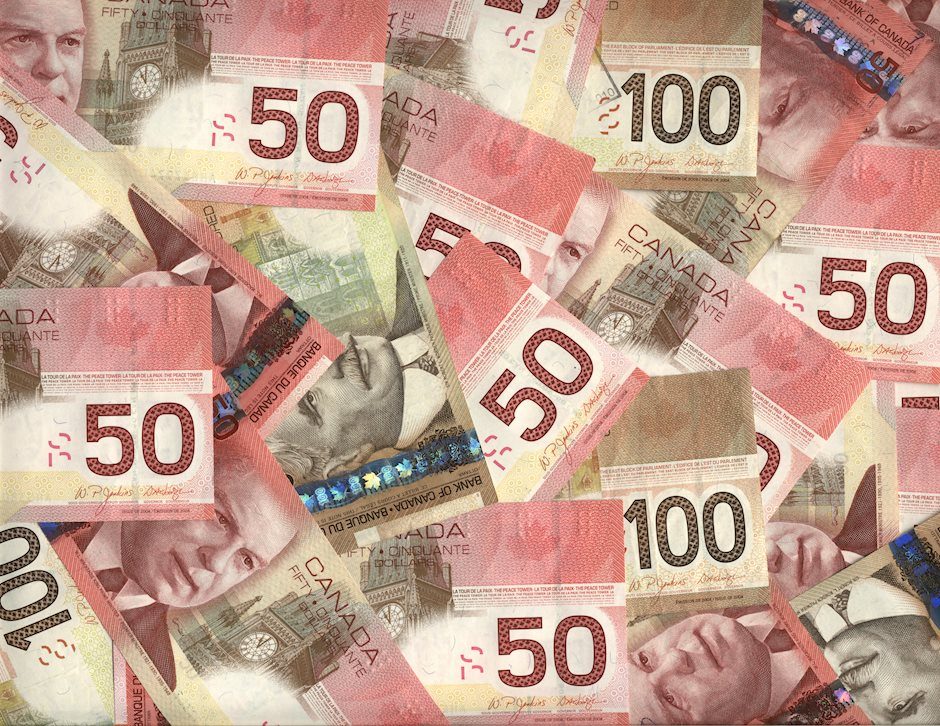USD/CAD hovers around 1.3900 due to market caution ahead of US presidential election
- USD/CAD remains steady as traders adopt caution due to increased uncertainty surrounding the US election results.
- Former President Trump indicated that he may challenge any unfavorable election result, as he did in 2020.
- The commodity-linked CAD may struggle due to cooling WTI price, despite a more than 3% increase on Monday.

The USD/CAD pair maintains its position around 1.3900 during Tuesday’s Asian session, as traders exercise caution amid heightened uncertainty over the US presidential election outcome. However, a lower-than-expected US Nonfarm Payrolls report for October, showing an increase of only 12,000 compared to the previous 223,000, has put downward pressure on the US Dollar (USD).
The opinion polls show that Former President Donald Trump and Vice President Kamala Harris are virtually even. The final winner may not be known for days after Tuesday’s vote. Trump and Harris both predicted victory as they campaigned across Pennsylvania on Monday in the final, frantic day of an exceptionally close US presidential election. Trump has already indicated he may challenge any unfavorable result, as he did in 2020.
Traders await the US Federal Reserve’s (Fed) policy decision, which is scheduled for Thursday. Markets expect a modest 25 basis point rate cut this week. The CME FedWatch Tool shows a 99.5% probability of a quarter-point rate cut by the Fed in November.
The downside of the USD/CAD pair could be restrained, as the commodity-linked Canadian Dollar (CAD) could face challenges from a cooling WTI price, despite a more than 3% increase on Monday after the OPEC+ coalition announced a delay in its December production hike. West Texas Intermediate (WTI) Oil price trades around $71.20 per barrel at the time of writing.
The Canadian Dollar may weaken as the Bank of Canada (BoC) is anticipated to implement additional rate cuts at its final monetary policy meeting of the year in December. BoC Governor Tiff Macklem has indicated the possibility of another 50 basis points (bps) rate reduction.
Last week, Governor Macklem told to Senate Committee “We’ve demonstrated we’re prepared to do a 50-basis-points cut if we think that’s appropriate. And if we think it’s appropriate to do it again, we’ll do it again.”
Canadian Dollar FAQs
The key factors driving the Canadian Dollar (CAD) are the level of interest rates set by the Bank of Canada (BoC), the price of Oil, Canada’s largest export, the health of its economy, inflation and the Trade Balance, which is the difference between the value of Canada’s exports versus its imports. Other factors include market sentiment – whether investors are taking on more risky assets (risk-on) or seeking safe-havens (risk-off) – with risk-on being CAD-positive. As its largest trading partner, the health of the US economy is also a key factor influencing the Canadian Dollar.
The Bank of Canada (BoC) has a significant influence on the Canadian Dollar by setting the level of interest rates that banks can lend to one another. This influences the level of interest rates for everyone. The main goal of the BoC is to maintain inflation at 1-3% by adjusting interest rates up or down. Relatively higher interest rates tend to be positive for the CAD. The Bank of Canada can also use quantitative easing and tightening to influence credit conditions, with the former CAD-negative and the latter CAD-positive.
The price of Oil is a key factor impacting the value of the Canadian Dollar. Petroleum is Canada’s biggest export, so Oil price tends to have an immediate impact on the CAD value. Generally, if Oil price rises CAD also goes up, as aggregate demand for the currency increases. The opposite is the case if the price of Oil falls. Higher Oil prices also tend to result in a greater likelihood of a positive Trade Balance, which is also supportive of the CAD.
While inflation had always traditionally been thought of as a negative factor for a currency since it lowers the value of money, the opposite has actually been the case in modern times with the relaxation of cross-border capital controls. Higher inflation tends to lead central banks to put up interest rates which attracts more capital inflows from global investors seeking a lucrative place to keep their money. This increases demand for the local currency, which in Canada’s case is the Canadian Dollar.
Macroeconomic data releases gauge the health of the economy and can have an impact on the Canadian Dollar. Indicators such as GDP, Manufacturing and Services PMIs, employment, and consumer sentiment surveys can all influence the direction of the CAD. A strong economy is good for the Canadian Dollar. Not only does it attract more foreign investment but it may encourage the Bank of Canada to put up interest rates, leading to a stronger currency. If economic data is weak, however, the CAD is likely to fall.
Author

Akhtar Faruqui
FXStreet
Akhtar Faruqui is a Forex Analyst based in New Delhi, India. With a keen eye for market trends and a passion for dissecting complex financial dynamics, he is dedicated to delivering accurate and insightful Forex news and analysis.

















